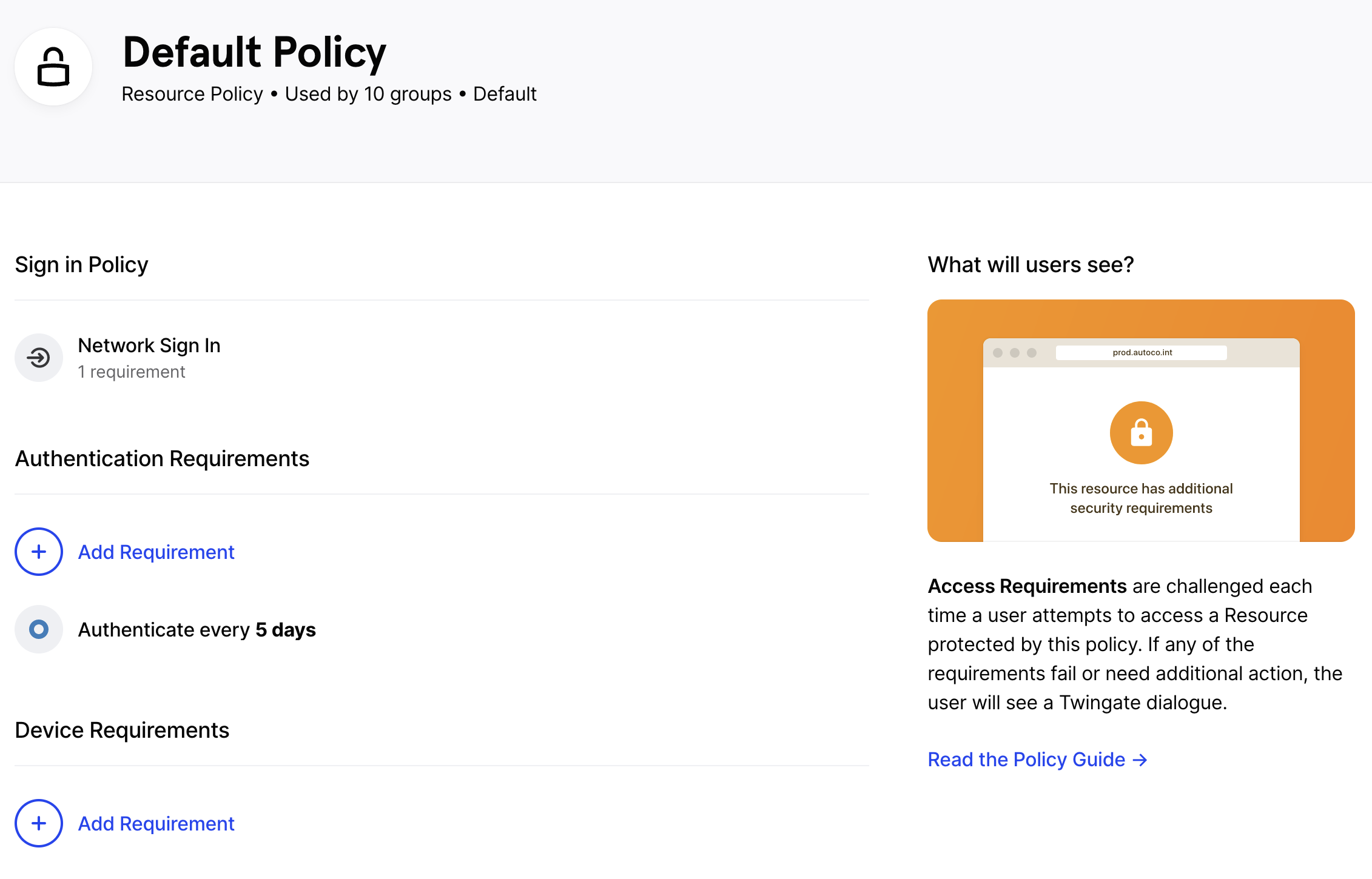

- #USER AUTHENTICATION SECURITY POLICY GENERATOR#
- #USER AUTHENTICATION SECURITY POLICY CODE#
- #USER AUTHENTICATION SECURITY POLICY PASSWORD#
You cannot select the first character of any password as a question mark (?) or an exclamation mark (!). Who is permitted to make changes? Customerĭatabase System Restrictions − None Illegal Passwords Parameter Unit − Number of characters (alphanumeric) This setting applies when new passwords are assigned and when existing passwords are changed or reset. However, the administrator can specify a greater minimum length. The password must have at least three characters. Parameter Description − This parameter specifies the minimum length of the logon password. You can click on documentation of the profile parameter for this policy and you can see the detailed documentation as from SAP as follows − This value can be changed using profile parameter and maximum length that is allowed is 8. In a SAP system, the minimum length for passwords in SAP Systems is 3 by default. This allows the users to change the initial password immediately when used for the first time. The following password policies are commonly used in a SAP System − Default/Initial Password Change This also helps to change the password at the regular time intervals for system security. Using password policy in a SAP system, an administrator can setup system users to deploy strong passwords that are not easy to break. In many organizations, password policy is shared as a part of security awareness training and it is mandatory for users to maintain the policy for security of critical systems and information in an organization. Password PolicyĪ password policy is defined as a set of instructions that a user must follow to improve system security by using strong passwords and by using them properly. You can open UME administration console using SAP NetWeaver Administrator option. An administrator can use actions which represent the smallest entity of UME role that a user can use to build access rights. You can use UME roles to control the user authorization in the system.
#USER AUTHENTICATION SECURITY POLICY CODE#
Transaction Code − SCUA and create distribution model. Using this tool, you can manage all the user master record centrally from the client of the system. You can also sync it with your directory servers. You can use CUA to maintain users for multiple ABAP-based systems. Transaction Code − PFCG Central User Administration
#USER AUTHENTICATION SECURITY POLICY GENERATOR#
You can use profile generator PFCG to create roles and assign authorizations to users in ABAP based systems. You can use SAP NetWeaver Identity Management for user management as well as for managing roles and role assignments in your SAP environment. You can use user management Transaction-Code SU01 to maintain users in your ABAP based Application Servers. Some of the most common User Management Tools are − User Management for ABAP Application Server (Transaction Code: SU01) They provide very strong authentication method for both type of NetWeaver Application servers – Java and ABAP. SAP NetWeaver System provides various user management tools that can be used to effectively manage users in your environment. SAP provides various default parameters that you should set to define password policies- password length, password complexity, default password change, etc User Management Tools in a SAP System To provide secure authentication mechanism via the username and password, there is a need to define password policies that doesn’t allow users to set easy predicted password. The User ID’s to login are created by the SAP Administrator. Most common method of authentication in a SAP system is by using the username and password to login. There are various authentication methods that are provided − Authentication Mechanism in a SAP SystemĪuthentication mechanism defines the way you access your SAP system. This enhances the use of secure authentication to protect the Availability, Integrity and Privacy of a User System. If an authorized user has access to important data and information of a system, then that user can also access other critical information as well.


If an unauthorized user can access SAP system under a known authorized user and can make configuration changes and manipulate system configuration and key policies.


 0 kommentar(er)
0 kommentar(er)
